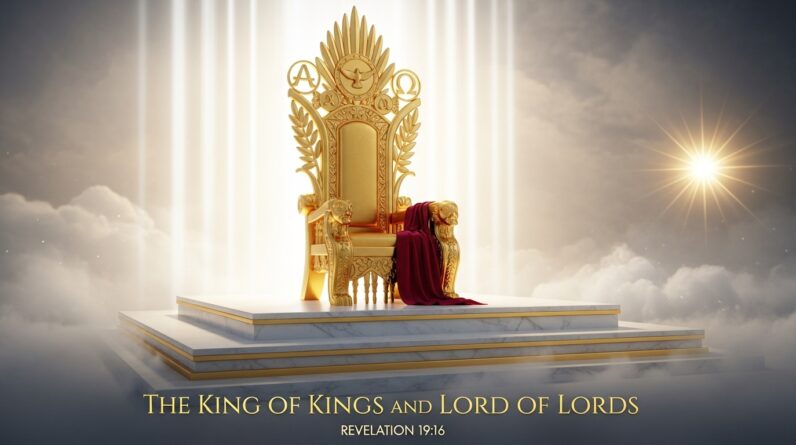Have you ever wondered about the secrets and enigmas hidden within the Book of Revelation? In Revelation 1:1, an extraordinary journey begins as the curtain is lifted upon the mysterious world of prophecy and divine revelations. Get ready to embark on a captivating exploration, as this article reveals the untold complexities and profound messages tucked away within the opening verses of this mesmerizing biblical book. Brace yourself for a thrilling revelation!
Historical and Cultural Context
The Authorship of Revelation
Revelation is traditionally attributed to the apostle John, who also wrote the Gospel of John and the three epistles of John. However, there is some debate among scholars regarding the authorship of the book. Some argue that it was written by a different John, while others suggest that it may have been a collective effort by a group of early Christian prophets. Despite these debates, the authorship of Revelation does not diminish its significance or the message it conveys.
The Time and Place of Writing
Revelation was most likely written around 95 AD during the reign of the Roman emperor Domitian. This was a time of intense persecution for Christians, as the Roman Empire sought to suppress the growing movement. The author of Revelation was exiled to the island of Patmos, where he received the visions and revelations that form the basis of the book.
The Audience
The primary audience of Revelation was the seven churches in Asia Minor: Ephesus, Smyrna, Pergamum, Thyatira, Sardis, Philadelphia, and Laodicea. These churches were facing various challenges, including opposition from Jewish and Roman authorities, doctrinal issues, and cultural assimilation. The message of Revelation was intended to encourage and strengthen these communities in their faith.
The Genre of Revelation
Revelation falls under the genre of apocalyptic literature, which was common in Jewish and early Christian writings. Apocalyptic literature often uses vivid imagery, symbolism, and prophetic visions to convey theological truths and reveal hidden knowledge about the nature of God and the future. Understanding the apocalyptic genre is crucial for interpreting the symbolic language and themes in Revelation.
Interpreting Revelation
The Literal vs Symbolic Interpretation of Revelation
One of the key debates in interpreting Revelation revolves around whether to take its language and imagery literally or symbolically. Some argue for a literal interpretation, understanding the events described in the book as concrete and future occurrences. Others advocate for a symbolic interpretation, viewing the book as an allegory that speaks to timeless spiritual realities. Both approaches have their merits, and a balanced interpretation considers the symbolic nature of Revelation while acknowledging elements of literal fulfillment.
Overview of Different Approaches to Interpretation
There are several different approaches to interpreting Revelation, each emphasizing different aspects of the book. The futurist approach understands Revelation as primarily describing future events. The historicist approach sees the book as a symbolic representation of historical events from the time of its writing until the present day. The preterist approach views Revelation as primarily fulfilled in the first century, with its prophecies concerning the fall of Jerusalem and the Roman Empire. The idealist approach takes a more symbolic and allegorical view of the book, focusing on its timeless spiritual messages rather than specific historical events.
Key Themes and Symbols in Revelation
Revelation is replete with rich symbolism and imagery that convey important theological themes. Some key themes include the victory of Christ over evil, the perseverance of the saints in the face of persecution, the judgment of God upon the wicked, and the hope of the new creation. The book also includes a number of significant symbols, such as the seven seals, seven trumpets, and seven bowls, each revealing different aspects of God’s plan and purposes.
The Importance of Context in Interpretation
Interpreting Revelation requires careful attention to its historical, cultural, and literary context. Understanding the social, political, and religious milieu of the first-century Roman Empire helps shed light on the challenges faced by the original audience and the relevance of the book’s message. Additionally, grasping the apocalyptic genre and its use of symbolism is crucial for discerning the intended meaning behind the visions and imagery presented in the book.
Structure and Outline of Revelation
The Prologue (Revelation 1:1-8)
The book of Revelation begins with a prologue that establishes its divine origin, purpose, and authority. It introduces the main themes of the book, emphasizing the imminent return of Jesus Christ and the unveiling of future events. The prologue also provides a blessing for those who read and heed the words of Revelation.
The Seven Letters (Revelation 2-3)
Following the prologue, Revelation presents seven letters addressed to the seven churches in Asia Minor. Each letter contains a specific message for the respective church, addressing their strengths, weaknesses, and future prospects. These letters provide guidance, exhortation, and warnings to the churches, emphasizing the importance of faithfulness and perseverance.
The Seven Seals (Revelation 4-7)
The opening of the seven seals marks the beginning of a series of visionary experiences for the author of Revelation. Each seal represents a specific event or judgment that will take place as part of God’s plan for humanity. The seals reveal the unfolding of history and God’s divine purposes, building suspense and anticipation for what is to come.
The Seven Trumpets (Revelation 8-11)
As the seventh seal is opened, seven angels sound seven trumpets that announce a new series of judgments upon the earth. These trumpet judgments depict devastating events and conflicts that shake the foundations of the world. The purpose of these judgments is to call humanity to repentance and judgment, as well as to demonstrate God’s sovereignty and righteous judgment.
The Seven Signs and Visions (Revelation 12-15)
The next section of Revelation introduces a series of signs and visions that depict cosmic battles between good and evil, as well as the ultimate victory of Christ. These visions include the woman and the dragon, the beasts from the sea and the earth, and the Lamb standing on Mount Zion. These signs and visions convey important theological messages about the nature of evil, the role of believers, and the ultimate triumph of God’s kingdom.
The Seven Bowls (Revelation 16)
The pouring out of the seven bowls represents the final outpouring of God’s wrath upon the earth. These judgments are described as plagues and catastrophes that bring about widespread destruction and suffering. The bowls serve as a culmination of the previous judgments and signal the imminent return of Christ and the final judgment.
The Judgment of Babylon (Revelation 17-18)
Revelation devotes two chapters to the detailed description of Babylon, a symbol of human decadence, idolatry, and spiritual adultery. The judgment of Babylon represents the fall of all earthly powers and empires built on oppression, corruption, and injustice. It also foretells the ultimate victory of God’s kingdom and the restoration of all things.
The Return of Christ (Revelation 19)
Chapter 19 of Revelation depicts the glorious return of Jesus Christ, riding on a white horse and accompanied by the armies of heaven. This event marks the triumph of Christ over evil and the establishment of God’s righteous rule on earth. The return of Christ brings judgment upon the wicked and rewards for the faithful.
The Final Judgment and New Creation (Revelation 20-22)
The final chapters of Revelation describe the judgment of the dead, the defeat of Satan, and the new creation. The book concludes with a vision of the new Jerusalem, a holy city descending from heaven, where God dwells with his people and there is no more suffering or death. This vision offers hope and assurance of the ultimate fulfillment of God’s promises and the restoration of all things.
Major Themes in Revelation
The Victory of Christ over Evil
The book of Revelation highlights the ultimate victory of Jesus Christ over all forces of evil. It depicts him as the triumphant Lamb who conquers sin, death, and Satan through his sacrificial death and resurrection. This theme of victory gives hope and encouragement to believers living in a world marked by persecution and suffering.
The Perseverance of the Saints
Revelation emphasizes the importance of perseverance and faithfulness in the face of adversity. The book encourages believers to remain steadfast in their devotion to Christ, even in the midst of trials and tribulations. It assures them that those who endure will be rewarded and experience the ultimate victory of God’s kingdom.
The Judgment of God
Revelation presents a stark picture of the judgment that awaits the wicked and unrepentant. It depicts God as a righteous judge who will hold all accountable for their actions and rewards each according to their deeds. The message of judgment serves as a warning to turn from evil and align oneself with God’s purposes.
The Hope of the New Creation
Central to the message of Revelation is the hope of a new creation, where God dwells with his people and there is no more suffering or death. This vision of a renewed and restored world offers comfort and assurance to believers, reminding them that God’s ultimate plan is one of redemption and reconciliation.
Historical Interpretations of Revelation
Preterist Interpretation
The preterist interpretation understands the events of Revelation as primarily fulfilled in the first century, particularly with the fall of Jerusalem and the Roman Empire. This approach views the book as addressing the specific challenges faced by the early Christian communities and their victory over their oppressors. The preterist interpretation emphasizes the relevance of Revelation for its original audience, while recognizing its ongoing spiritual significance.
Futurist Interpretation
The futurist interpretation sees Revelation as primarily describing events that will occur in the future, particularly during the end times. This approach places a heavy emphasis on the literal fulfillment of the book’s prophecies, often associating them with specific geopolitical events and figures. The futurist interpretation highlights the importance of vigilance and preparation for the return of Christ.
Idealist Interpretation
The idealist interpretation takes a symbolic and allegorical view of Revelation, emphasizing its timeless spiritual messages rather than specific historical events. This approach views the book as depicting the ongoing struggle between good and evil throughout human history. The idealist interpretation focuses on the universal themes and principles found in Revelation.
Historicist Interpretation
The historicist interpretation views Revelation as a symbolic representation of historical events from the time of its writing until the present day. This approach sees the book as a prophetic outline of the major historical and political developments that have shaped the world. The historicist interpretation emphasizes the relevance of Revelation for understanding the past and present.
Theological Significance of Revelation
The Revelation of God’s Sovereignty
Revelation reveals the sovereignty of God over all of creation. It portrays God as the ultimate ruler, who orchestrates history according to his divine purposes. The book reminds believers that despite the challenges and trials they face, God is in control and will ultimately bring about justice and redemption.
The Assurance of God’s Faithfulness
Revelation reassures believers of God’s faithfulness in keeping his promises. It reminds them that despite appearances, God is always at work fulfilling his plan and purposes. The book encourages believers to trust in God’s faithfulness and to remain steadfast in their devotion to him.
The Call to Faith and Obedience
Revelation calls believers to deepening faith and obedience to God’s commands. It urges them to resist the temptations and pressures of the world and to remain faithful to their calling as followers of Christ. The book challenges believers to live lives of righteousness and holiness in anticipation of the coming kingdom.
The Hope of Eternal Life
Central to the message of Revelation is the hope of eternal life in the presence of God. The book assures believers that their present suffering is temporary and will be replaced by joy and glory in the new creation. This hope sustains believers in their journey and gives them the strength to persevere in the face of adversity.
Challenges in Understanding Revelation
The Symbolism and Imagery of Revelation
One of the main challenges in understanding Revelation is deciphering the symbolic language and imagery used throughout the book. The visions and descriptions can be complex and open to different interpretations. It is important to approach the symbols with care and to seek a balanced interpretation that takes into account the broader context of the book.
The Apocalyptic Genre
The apocalyptic genre, in which Revelation is written, can be challenging to interpret without the proper knowledge and understanding. Apocalyptic literature often utilizes symbolic language, visions, and prophetic imagery to convey its message. Familiarity with the conventions and themes of apocalyptic literature can help in unraveling the mysteries of Revelation.
The Cultural and Linguistic Barriers
Revelation was written in a specific cultural and historical context that may be unfamiliar to modern readers. The book contains references to first-century events, beliefs, and symbols that require historical and cultural background knowledge. Additionally, the original Greek language of Revelation can pose challenges in translation and interpretation.
The Historical Distance
The considerable time gap between the writing of Revelation and the present day can create challenges in understanding the book. The cultural, social, and political contexts of the first-century Roman Empire are significantly different from our modern world. It is essential to bridge the historical distance through scholarly research and cultural contextualization to accurately grasp the intended meaning of Revelation.
Practical Applications of Revelation
Drawing Inspiration and Encouragement from Revelation
Revelation offers inspiration and encouragement to believers facing challenges and difficulties in their lives. The book reminds them of the ultimate victory of Christ and the hope of a new creation. By meditating on the message of Revelation, believers can find strength and courage to face their trials and pursue a life of faithfulness.
Guiding Principles for Christian Living
Revelation provides guiding principles for Christian living based on the character and teachings of Jesus Christ. The book emphasizes the importance of love, humility, perseverance, and righteousness. It calls believers to live in a manner that reflects the values and kingdom of God, even in the face of opposition and persecution.
An Eschatological Perspective on the Present
Revelation invites believers to adopt an eschatological perspective, viewing their present circumstances in light of God’s ultimate plan and purposes. The book urges believers to live with a sense of urgency, knowing that the return of Christ is imminent. This perspective encourages believers to prioritize their relationship with God and to engage in acts of love and justice in the world.
Revelation’s Cultural Impact
Revelation in Art and Literature
The imagery and themes of Revelation have had a profound impact on art and literature throughout history. The book has inspired countless paintings, sculptures, and literary works, depicting its apocalyptic visions and theological messages. The vivid imagery of Revelation continues to captivate the imagination and inspire creativity.
Revelation in Contemporary Culture
Revelation continues to have a significant presence in contemporary culture. Its themes of victory, judgment, and hope resonate with people’s universal longing for justice and redemption. The book’s imagery and symbolism can be found in popular music, movies, and literature, often used to convey themes of struggle, transformation, and the search for meaning.
Revelation’s Influence on Christian Eschatology
Revelation has had a profound influence on Christian eschatological beliefs and theories. The book’s prophetic visions and descriptions of the end times have shaped various interpretations of the second coming of Christ, the nature of the millennium, and the final judgment. Revelation remains a significant source of theological reflection and debate within Christian circles.
The Role of Revelation in Worship
Revelation plays a vital role in Christian worship, particularly in liturgical settings. The book’s themes of praise, adoration, and hope are often incorporated into hymns, prayers, and sermons. The imagery and language of Revelation help believers express their worship and deepen their understanding of God’s sovereignty and redemptive plan.
Further Study and Resources
Recommended Commentaries on Revelation
For a deeper understanding of Revelation, there are several insightful commentaries available. Some recommended commentaries include:
- “The Book of Revelation” by G.K. Beale
- “Revelation” by Robert H. Mounce
- “The Theology of the Book of Revelation” by Richard Bauckham
- “A Commentary on the Apocalypse of John” by David E. Aune
These commentaries offer in-depth analysis and interpretation of the book of Revelation, providing valuable insights for further study.
Scholarly Articles and Books on Revelation
Numerous scholarly articles and books have been written on various aspects of Revelation. Some recommended scholarly resources include:
- “The Theology of the Book of Revelation” edited by Richard Bauckham
- “Revelation and the End of All Things” by Craig R. Koester
- “Revelation” by Ben Witherington III
- “The Lamb’s Supper: The Mass as Heaven on Earth” by Scott Hahn
These resources offer academic perspectives, historical research, and theological insights into the book of Revelation.
Online Resources for Deeper Study
The internet provides many online resources for those seeking to delve deeper into the study of Revelation. Some recommended online resources include:
- The Biblical Studies Foundation (www.bible.org)
- The Center for the Study of New Testament Manuscripts (www.csntm.org)
- The Four Views on Revelation (www.ivpress.com/four-views-on-revelation)
- The Society of Biblical Literature (www.sbl-site.org)
These websites offer a wealth of articles, essays, and scholarly material that can aid in the study and interpretation of Revelation.
Revelation Study Groups and Courses
For those interested in studying Revelation in a group setting, there are various study groups and courses available. Some options include:
- Local churches and Christian organizations that offer Bible study groups or classes on Revelation.
- Online platforms that provide virtual study groups or courses on Revelation, such as Udemy or Coursera.
- Seminaries and theological institutions that offer specialized courses on Revelation or biblical eschatology.
Participating in a study group or enrolling in a course can provide opportunities for discussion, collaboration, and deeper engagement with the themes and mysteries of Revelation.







